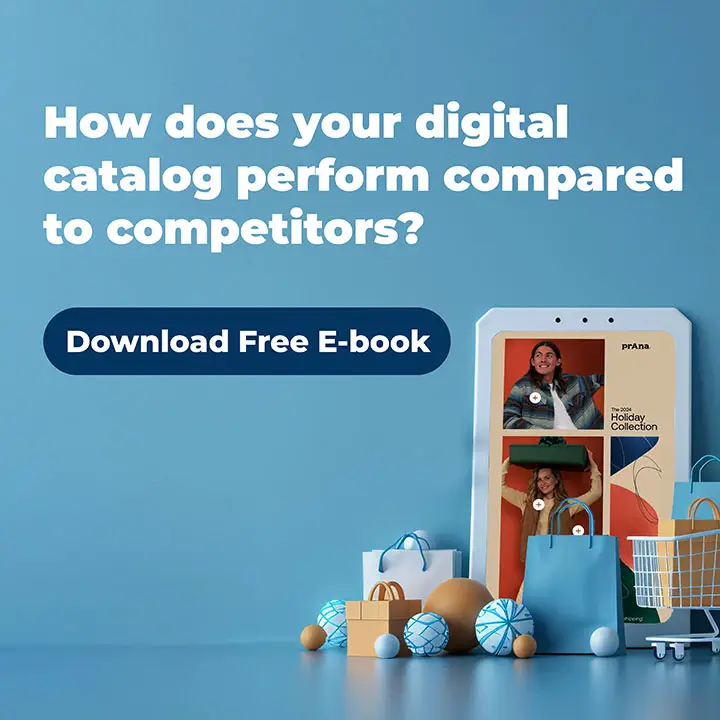Roughly half of shoppers — both on the high street and online — don’t know exactly what they want. Physical shops are equipped for this browsing public, but online stores often aren’t. With content marketing, you can attract and engage browsing shoppers online.
Content Marketing: More than just SEO & conversion…
By looking at content marketing from a different angle than just SEO, its function can become more evident. It also becomes apparent that many retailers and brands are missing out on a great opportunity. Ecommerce sites are often optimised for conversion. From that point of view, content marketing is seen purely as a way to get customers to the site. The site itself is then a conversion platform.
But is this approach of managing for conversion enough? This often translates into an experience in which search and filtering are central for the consumer. In addition, many brands use algorithms to estimate what the consumer is looking for as accurately as possible to increase the chances of conversion.
Everything pushes a consumer to buy a specific product as quickly as possible. But what if you want to reach customers who don’t know what they want? Shoppers who don’t know that you are offering products that they need when they see them. Or that one offer they really can’t pass up.
This is where content marketing can play an important role. Content marketing within eCommerce has evolved into more than just a blog post, product review, or a handful of product images. It has shifted to replicating the offline shopping experience with the convenience of being online: an experience where (potential) customers discover products and offers.
Reproducing the offline shopping experience
Offline shopping has become a leisure activity in itself. Shoppers love to stroll down the high street, look at what’s on offer, see the latest trends, or what’s new. Approximately 50% of these shoppers know what they want. They go to the shop, take the item to the cash register, pay, and leave. For these shoppers, the current eCommerce model is perfect.
The other 50% of shoppers go shopping to enjoy the experience. Seeing and discovering products and offers is central to this. They are looking for inspiration and visit different physical shops to see what they offer.
When comparing the offline shopping experience with online shopping, most online retailers have only optimized their shop for those who know what they want: on-site search, filters, and categories. An eCommerce shop optimized only for transactions will not attract the others — the browsing shoppers. For them, there is little opportunity to enjoy their shopping.
That approach has left a gap in the eCommerce shopping experience. Online content is essentially the first step in recreating the discovery experience that physical shopping makes possible, whether browsing the high street, browsing a catalog, or trying a product.
From this perspective, we can look at ways in which consumers discover new brands and products in an eCommerce setting that is not just driven by filters, searches, or algorithms that categorize shoppers in too general a manner. In other words: where retailers set up an online discovery marketing channel that doesn’t alienate half of the shoppers.
Dependence on third party platforms
When we go online today, we often rely on third-party services to discover new products and brands, usually on popular social media apps such as Instagram, Facebook, and Pinterest, or through influencers, YouTube, or review sites. This means shoppers will leave your eCommerce site (and other owned channels) if you don’t offer a good product discovery experience. They will continue their search on social media and may end up at competitors’ sites, whereas they could have stayed on your platform in the first place.
In addition, the content on social media platforms is often user-generated. All-in-all, this results in a gap and provides room for a discovery experience that gives brands more control over how they represent their offering.
Create your own discovery experience
So when shoppers land on your eCommerce platform, you want to be able to serve both types of shoppers:
- The shoppers who already know (pretty much) what they want and are looking for a specific product.
- Shoppers who just want to ‘look around’.
The key thing is to give browsing shoppers a positive experience, good content and make it accessible — in a way that keeps your brand in control. These shoppers want to browse a wide range of products as easily as possible, where inspiration is central, just like a printed brochure or catalog, but in a way that makes use of the rich content and media available online.
Often, this is content aimed at context and benefits rather than a specific product. For example, you can get inspiration for new looks when it comes to fashion. When it comes to furniture, you can get inspiration from interior designs. And when it comes to groceries, you can get inspiration from prepared dishes.
A trend seems to be emerging in which these three points are essential:
- A narrative that is easy to consume — Browsing shoppers want to learn about your brand with a simple swipe or scroll. They want to discover, as it were, all that you have to offer.
- Combine different forms of media within one experience — By combining rich media such as video, animation, and lifestyle photography with editorial content, it becomes possible to tell a more compelling story with higher levels of involvement (engagement).
- Being able to buy directly from the content — When you as a shopper see a beautiful product in a lifestyle photo, for example, you don’t want to look it up manually. This creates unnecessary friction in the shopping journey. That’s why you want to tag each product in both videos and photos or give it a path-to-purchase in some other way. This way, shoppers can click directly from the content to the right product or even add it to their shopping cart.
Examples
You can find good examples of discovery or inspiration experiences for eCommerce in various places and different industries.
Louis Vuitton Magazine – Available on their eCommerce site via the main menu at the top of the page (“Magazine”).
By simply scrolling, you can discover their collections through lifestyle photography, video, and instant shop-the-look functionality. Clicking on a product in the photos opens an overview of featured products:


CB2 Lookbooks – Available on the CB2 web store.
The lookbooks look like a traditional magazine: you get more inspiration for your interior with every click to the next page. By clicking on the photos, a lightbox pops up to show which products are in the image, with direct shopping options:


Allerhande – Available on the Albert Heijn web store (“Recipes”).
You can easily discover dishes while scrolling. You can add all the ingredients directly to your shopping list when you click on a dish.


Conclusion — Enrich your online store with a product discovery channel
In a nutshell, many eCommerce stores still have great potential to improve their approach to the ‘browsing’ consumer. If the search function or product filters are not helping a consumer, what will? Start seeing content marketing as more than just an SEO or blogging tool, and set up a channel where visitors can discover your products, offers, and content through a narrative.
Shoppers who already know what they want:
- Have a specific product in mind.
- Use filters and search terms to narrow the selection and find the product.
- Buy the product.
Browsing shoppers:
- Want to be inspired: ‘what’s out there?’
- Use content to come up with ideas.
- Make an impulse purchase or are primed to buy later.
Interested in publishing a catalog? Contact us, or sign up for our free 14-day trial here.


